|
|
Кацусика Хокусай. Тридцать шесть видов Фудзи: № 46. Обратная сторона Фудзи. Вид со стороны реки Минобугава
Katsushika Hokusai. View from the Other Side of Fuji from the Minobu River, from the series Thirty-six Views of Mount Fuji
冨嶽三十六景 身延川裏不二View from the Other Side of Fuji from the Minobu River (Minobugawa ura Fuji), from the series Thirty-six Views of Mount Fuji (Fugaku sanjūrokkei)Artist: Katsushika Hokusai (1760–1849)Period: Edo period (1615–1868)Date: ca. 1831–32
Servants with two horses meet a group of travelers on the bank of the roaring Minobu River. On the opposite side of the river, Fuji rises between rugged brown and blue crags. The tree in the foreground reaches across the rough waters, directing the viewer's eye toward the majestic mountain. (The Metropolitan Museum of Art)
Hokusai preferred to show Mount Fuji majestically in the distance, or in close-ups with its long flanks. This print is unusual in that Fuji competes with other mountains on each side. The brown mountains on its right and the green one on its left look taller because they are closer to the viewers in actual space; Fuji reveals only its now-covered summit between their fantastic shapes. The print well expresses the feeling of a remote mountainous region. Below the thick clouds, the Minobu River surges in rolling waves and breakers, indicated by numerous dark-blue dots. On the pinkish-brown colored highway, a man leads two horses to the right, while two bearers carrying a palanquin come from the opposite direction. Two more travelers follow the horses. To provide textures to the rough surface and to enhance the odd shapes of the other mountains, Hokusai uses curly, nervous brushwork, an effect that the block carver has skillfully reproduced. Traditionally Fuji seen from the west is called ‘back of Fuji’ (ura-Fuji), a face of the mountain known for its steep and rugged appearance. The ten prints that supplemented the original thirty-six prints of the series were assumed to be views of the back of Fuji. Yet this print is the only one bearing the subtitle “the back of Fuji.” The identity of the Minobu River is considered Hokusai’s mistake (Kondö 1966, no. 46). Regardless of the questionable identity of the river and the location, the print expresses a fantastic view of ura-Fuji. The key-block was printed in black. (The Asian Art Museum of San Francisco, HOKUSAI AND HIROSHIGE – Great Japanese Prints from the James A. Michener Collection, Honolulu Academy of Arts: The Asian Art Museum of San Francisco, 1998 Page 96. Cat. 47)
While most of the prints in the Thirty-six Views show the “front” of Mount Fuji, ten prints depict the volcano from its west or “back” side. It has been assumed that these ten prints were supplementary works added to the original thirty-six views of the series, making the total number of forty-six prints that survive today. This richly textured print places Mount Fuji between two tall, serrated mountains typical of Chinese landscape painting. Hokusai is known to have studied Chinese painting through the famous Mustard Seed Garden Manual of Painting (Kaishien gaden), which had been widely available in Japan since the seventeenth century. Passing through a narrow valley along the swiftly flowing river with the mountains rising precipitously from a girdle of clouds beyond, the travelers seem to have strayed into an otherworldly realm out of ancient Chinese myth. For all ten “back of Fuji” prints, the key-block was printed in black. The publisher Eijudö may have canceled the use of synthetic blue ink imported from the West for the additional ten prints due to the detrimental effect of the ink on woodblocks, as well as the decline in popularity of the color a few years after the first publication of the print series. “Hokusai’s Summit: Thirty-six Views of Mount Fuji” (09/24/2009-01/06/2010)
Katsushika Hokusai. View from the Other Side of Fuji from the Minobu River, from the series Thirty-six Views of Mount Fuji
Обратная сторона Фудзи. Вид со стороны реки Минобугава
Вдоль быстрого течения реки Фудзигава, вода в которой прибывает оттого, что в нее впадает река Асагава, протянулась горная дорога Минобу, ведущая к буддистскому храму Минобусан Куондзи. Впечатляет манера изображения бурной реки Фудзигава, которая стремительно течет с гор. Оттенки синего цвета точечно, подобно брызгам, разбрасываются по бурлящим потокам. Пологий склон горы справа, путники, бредущие по нему, деревья как бы уравновешивают, «успокаивают» то динамичное действие, которое разворачивается на дальнем плане, слева, за горным потоком. Высокие скалы, «расступающиеся» перед Фудзи, клубы белых облаков у их подножия создают ощущение тревоги. Ритмическая связь идущих по дороге людей, лошадей на переднем плане и скал на втором плане достигается путем единого цветового решения. Эта гравюра считается одним из шедевров в жанре пейзажа укиё-э. Мы видим, что Хокусай к этому времени уже усвоил достижения предшественников, работавших в области пейзажа, он прекрасно овладел различными способами передачи пространства.
Katsushika Hokusai. View from the Other Side of Fuji from the Minobu River, from the series Thirty-six Views of Mount Fuji
Katsushika Hokusai. View from the Other Side of Fuji from the Minobu River, from the series Thirty-six Views of Mount Fuji
Katsushika Hokusai. View from the Other Side of Fuji from the Minobu River, from the series Thirty-six Views of Mount Fuji
Все 46 гравюр серии «Тридцать шесть видов Фудзи» | Thirty-six Views of Mount Fuji | 富嶽三十六景 | Fugaku Sanjūrokkei
8 марта 2024, 16:25
0 комментариев
|
Партнёры
|

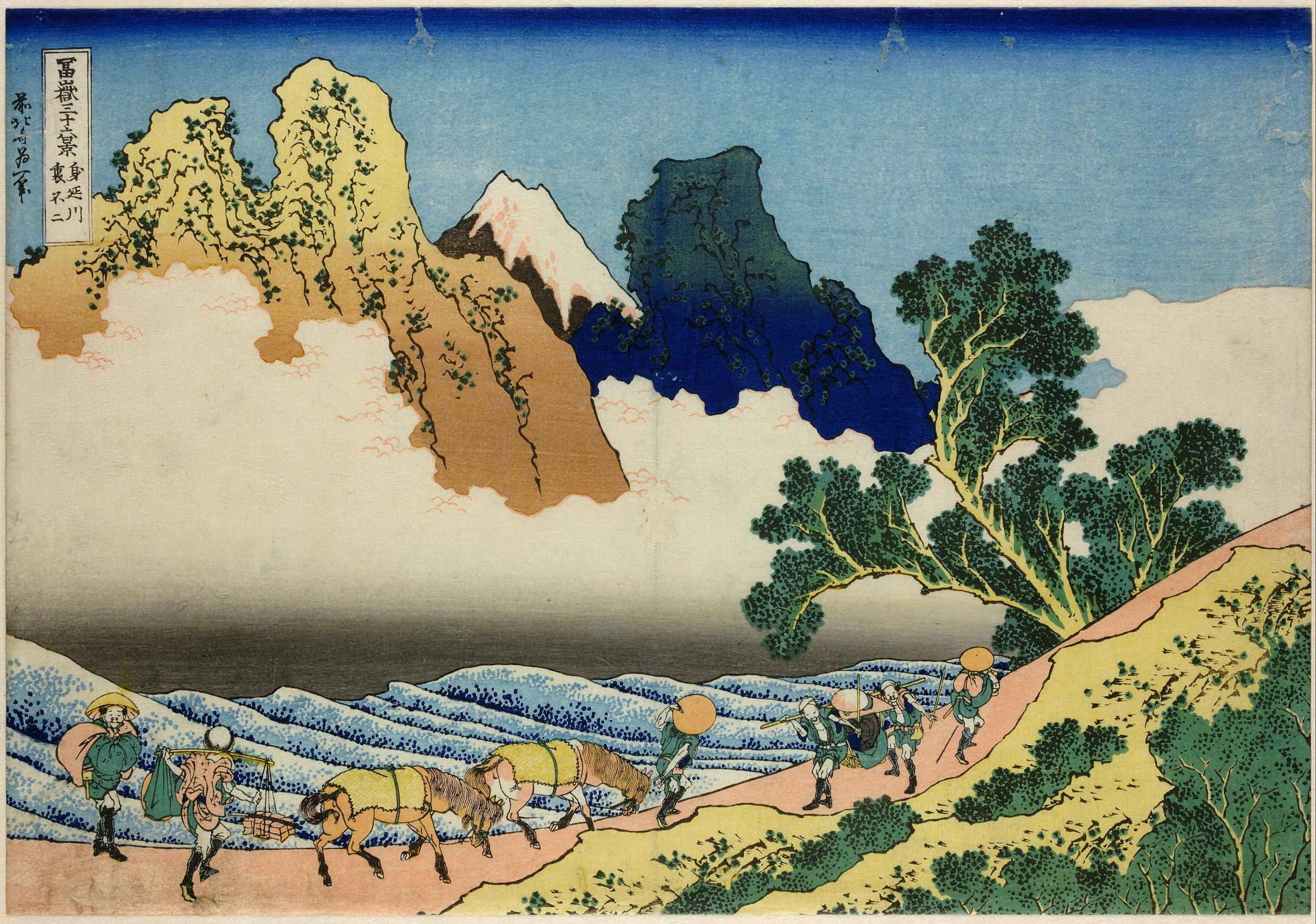
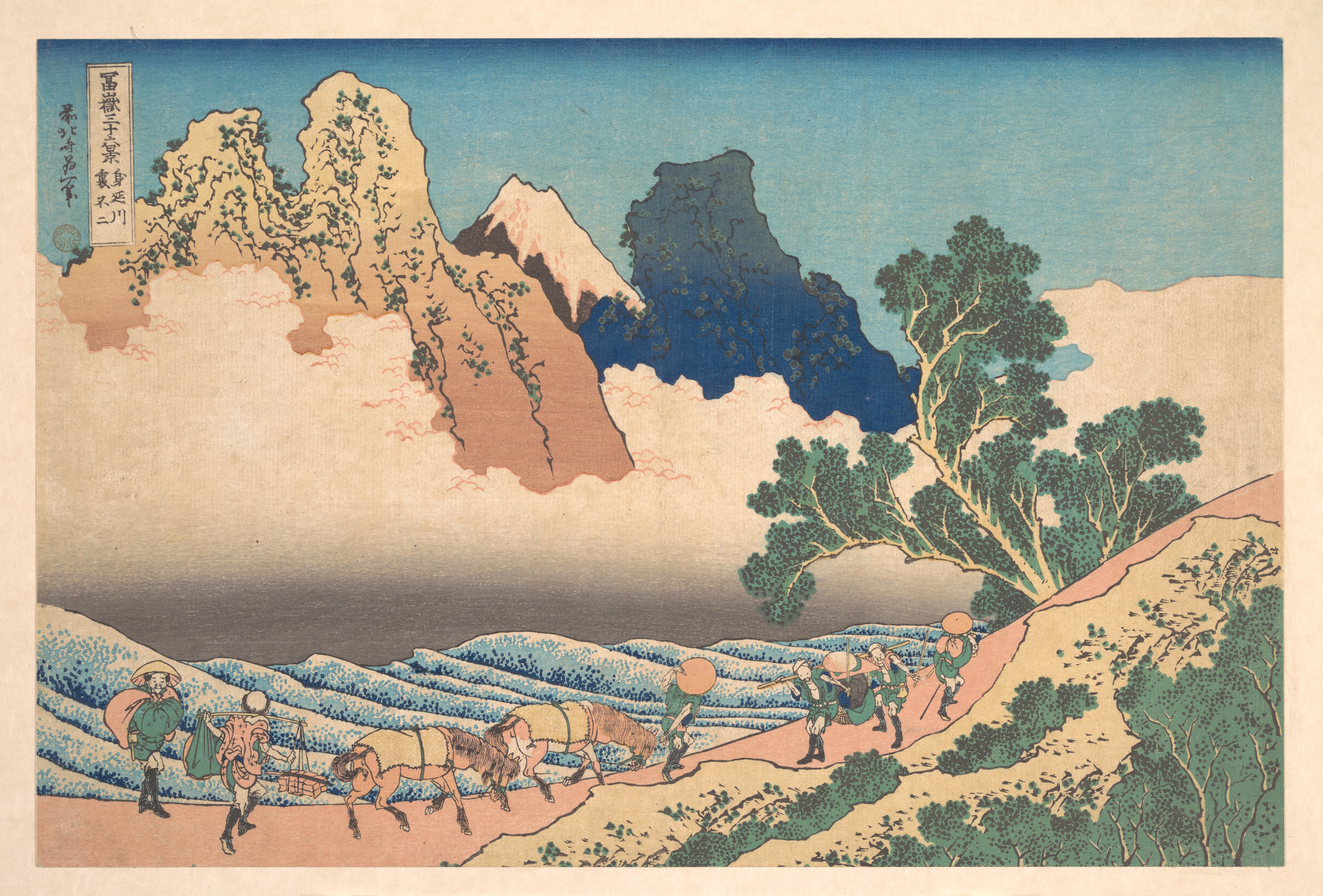
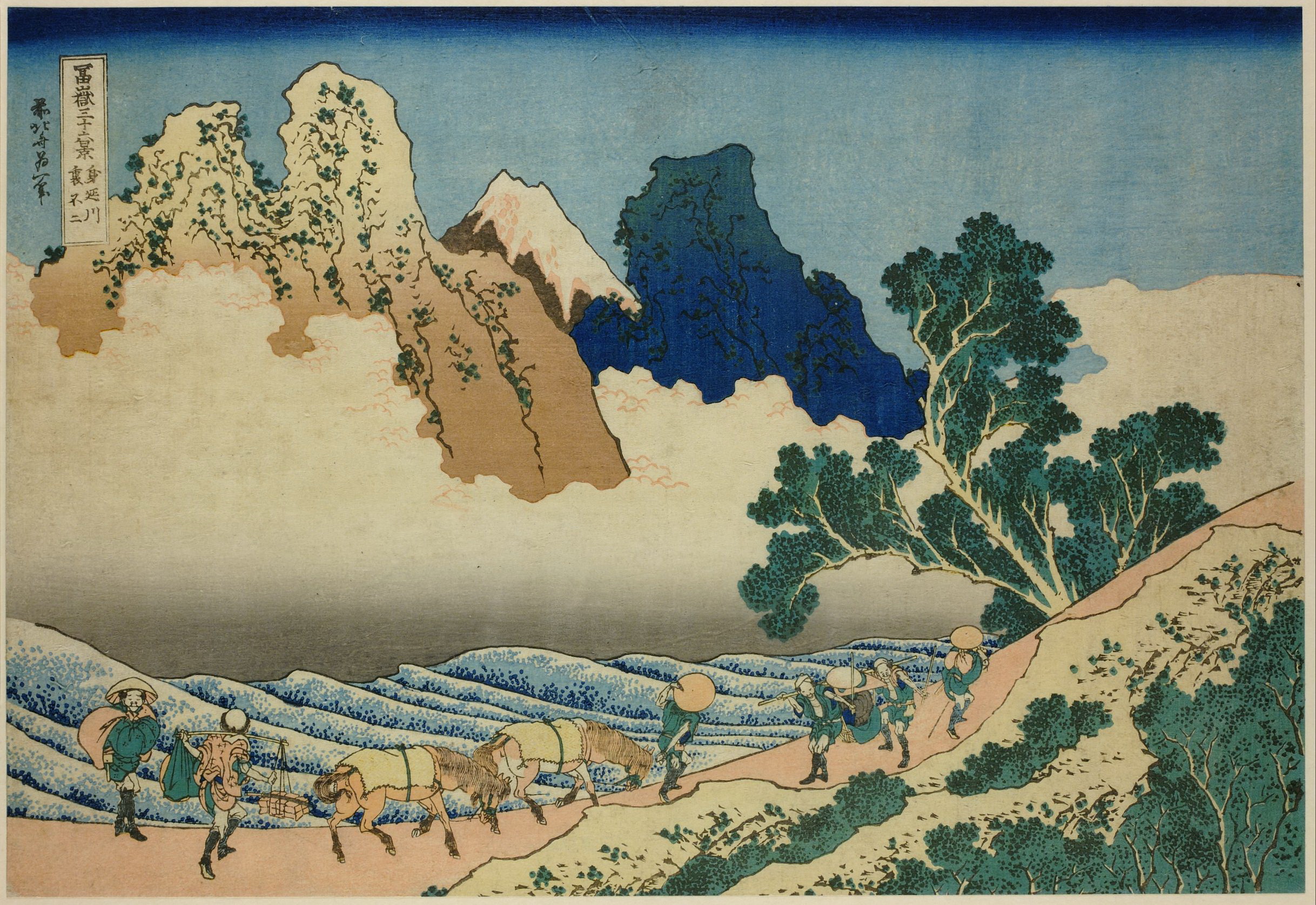
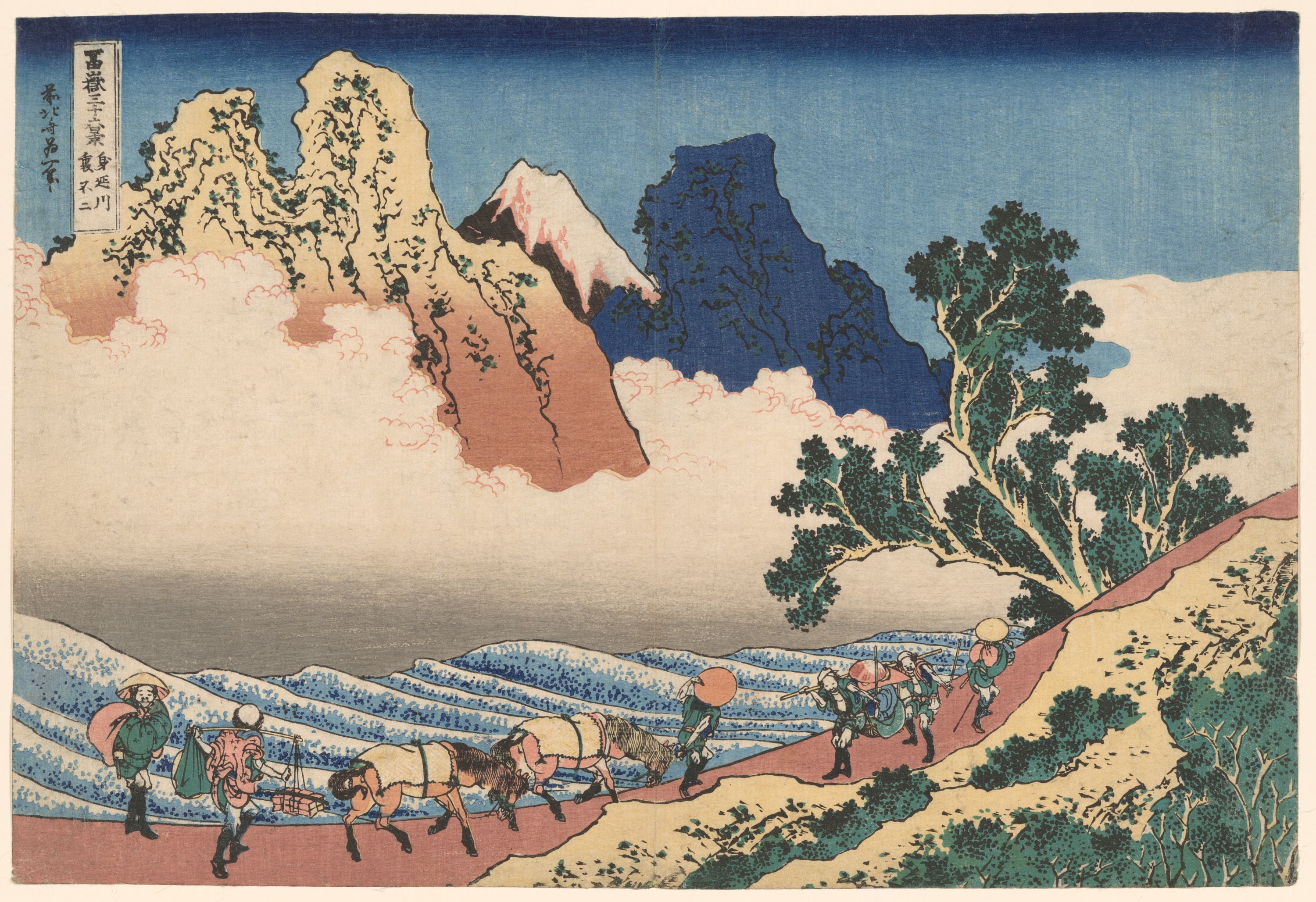
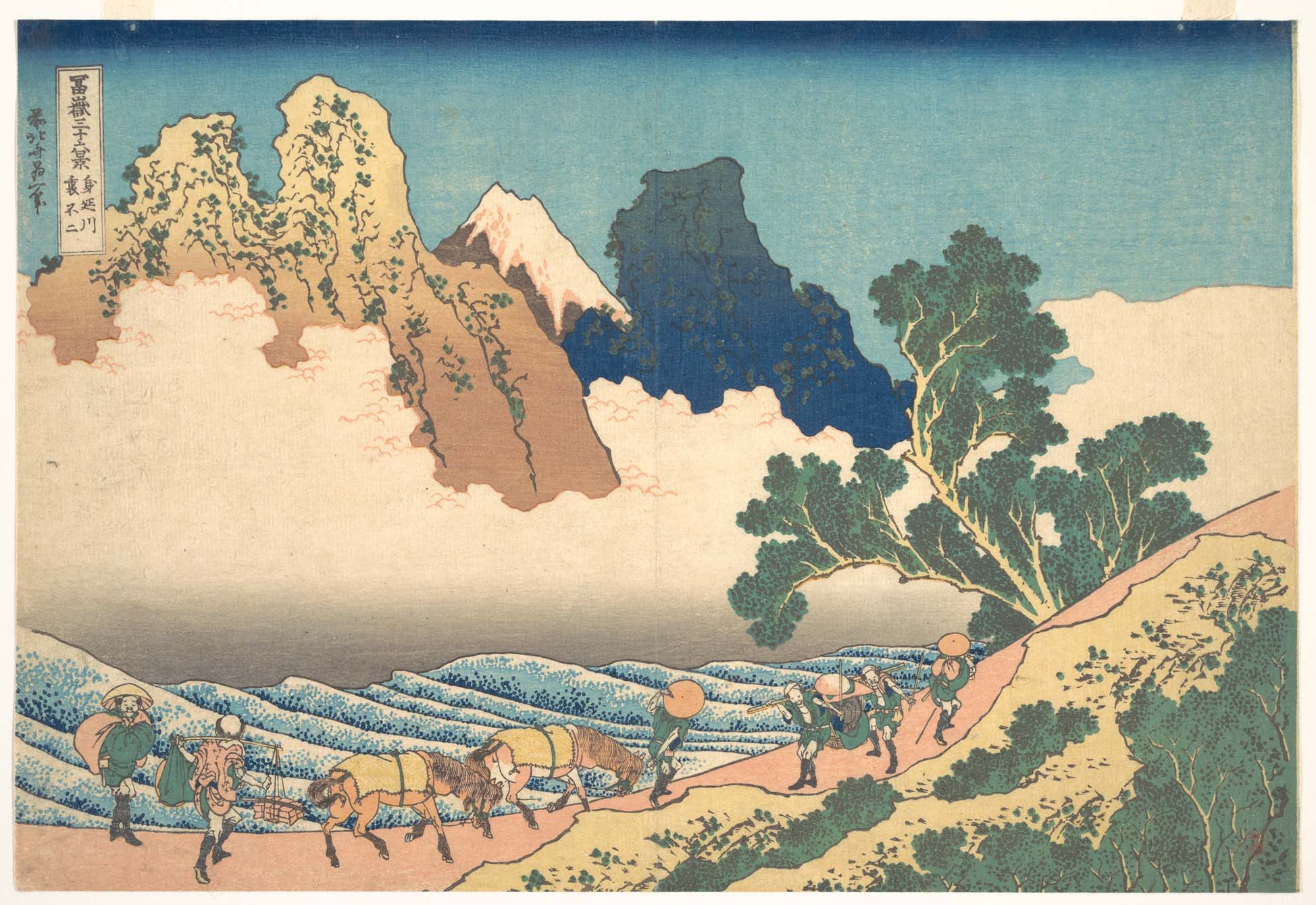
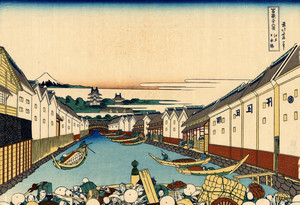
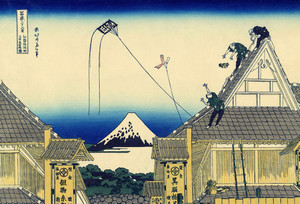
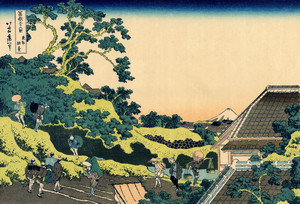
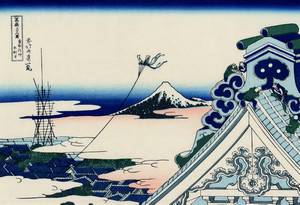
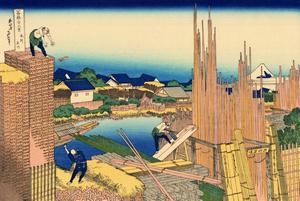
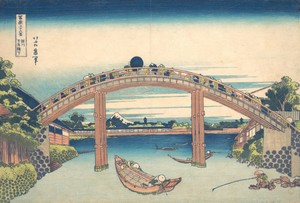
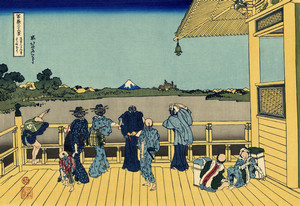
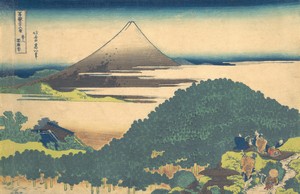
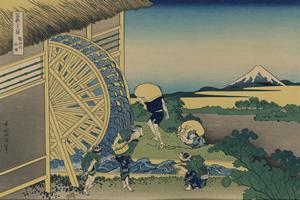
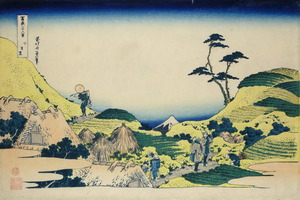
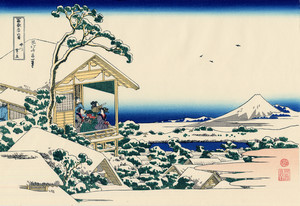
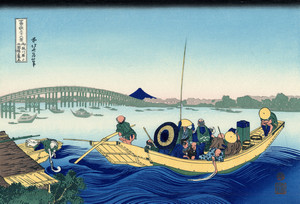
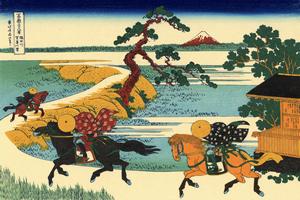
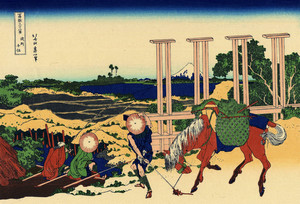
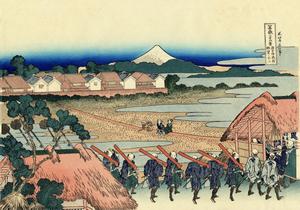
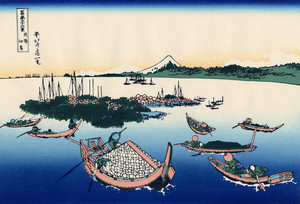
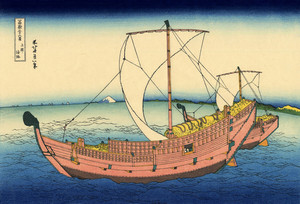
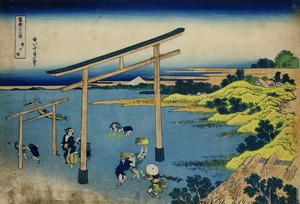
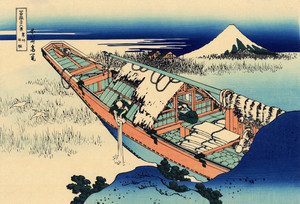
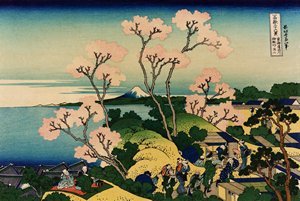
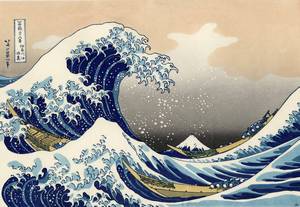
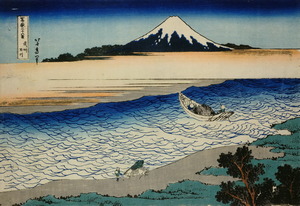
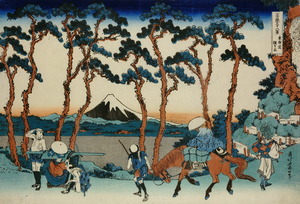
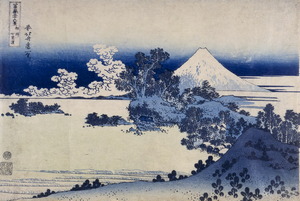
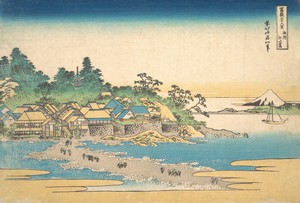
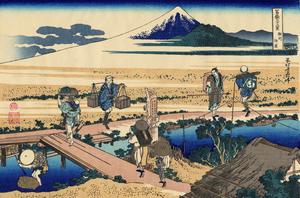
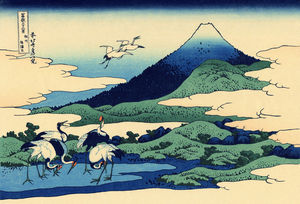
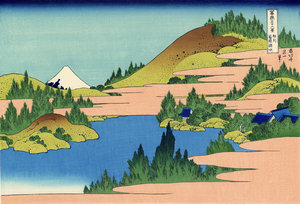
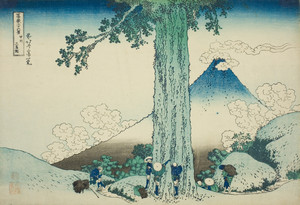
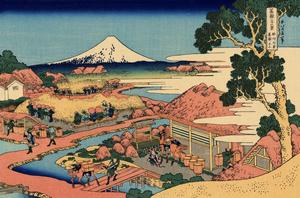
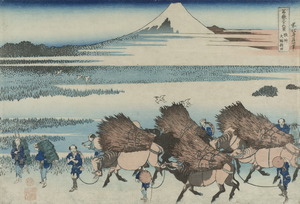
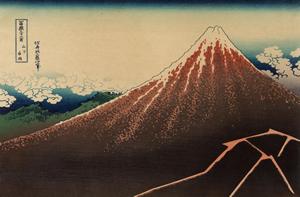
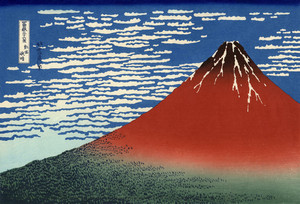
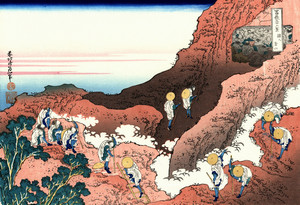
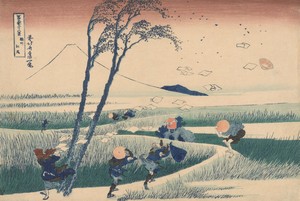
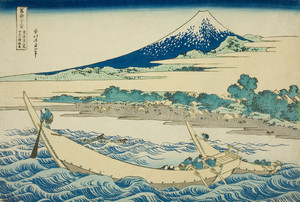
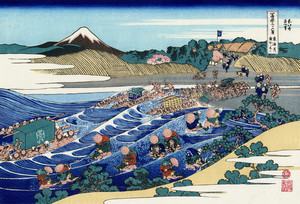
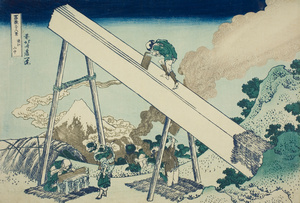
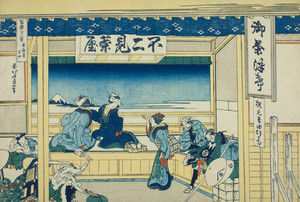
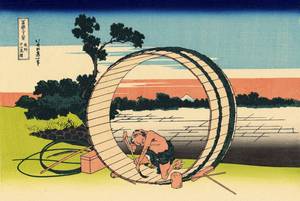
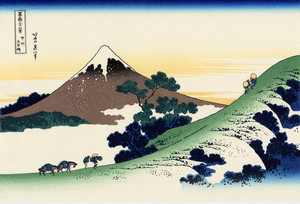
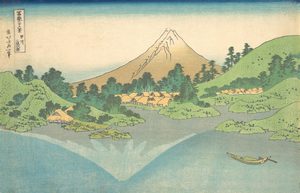
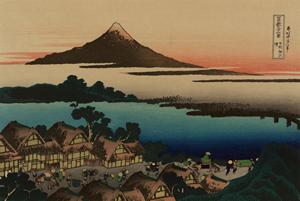
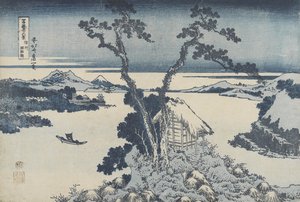
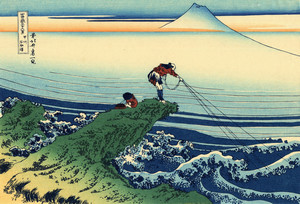
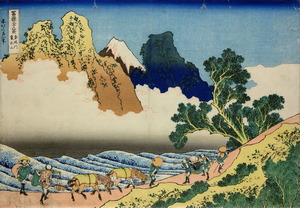





Комментарии
Добавить комментарий